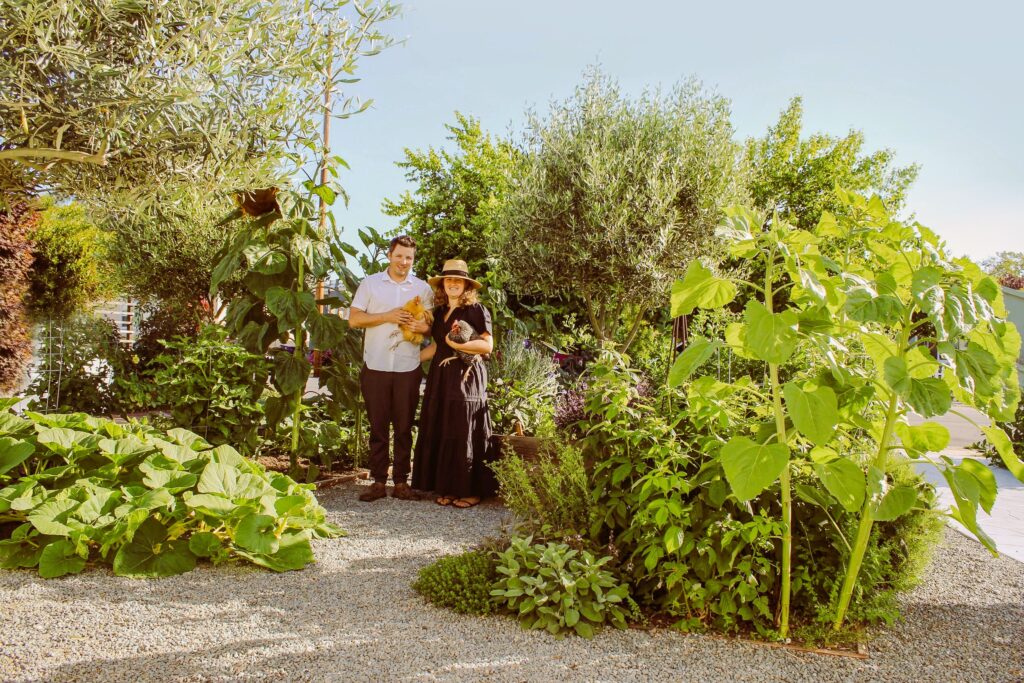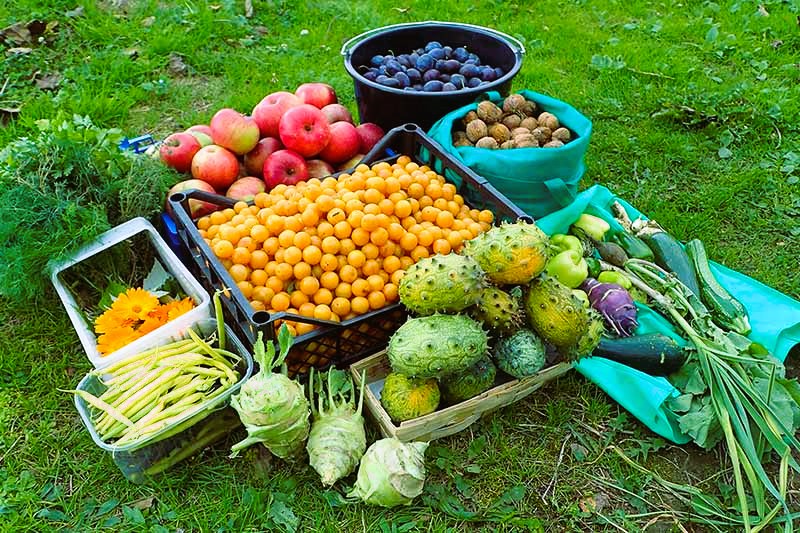Gardens have long been cherished for their beauty, but what if your garden could not only be visually stunning but also provide a bountiful harvest of fresh fruits, vegetables, and herbs? This is where the concept of edible landscaping comes into play. Edible landscaping combines the principles of traditional landscaping with the practicality of growing edible plants, resulting in a harmonious and productive garden that satisfies both the eyes and the taste buds. In this article, we will explore the world of edible landscaping and discover how you can create a beautiful garden that not only enhances the aesthetic appeal of your outdoor space but also provides a sustainable source of homegrown goodness.
- What is Edible Landscaping?
Edible landscaping is the art of incorporating edible plants into your landscape design. Instead of solely focusing on ornamental plants, edible landscaping utilizes fruit trees, berry bushes, vegetable beds, and herb gardens as integral components of the overall garden composition. The goal is to create an environment where beauty and functionality coexist, allowing you to enjoy the pleasures of both visual aesthetics and homegrown food.
- Benefits of Edible Landscaping
Edible landscaping offers a multitude of benefits that go beyond the traditional purely ornamental gardens:
a. Homegrown Goodness: By growing your own fruits, vegetables, and herbs, you have access to fresh, flavorful, and nutrient-rich produce right in your backyard. You have control over the growing methods, ensuring the use of organic practices and avoiding harmful chemicals.

b. Sustainability: Edible landscaping promotes sustainable living by reducing food miles and the carbon footprint associated with grocery store produce. You can embrace self-sufficiency and reduce your impact on the environment by cultivating a portion of your food at home.
c. Aesthetically Pleasing: Edible plants can be visually appealing, adding texture, color, and seasonal interest to your landscape. From the delicate blossoms of fruit trees to the vibrant hues of ripening vegetables, edible plants can transform your garden into a captivating tapestry of colors and textures.
d. Wildlife Habitat: Edible landscaping attracts beneficial insects, bees, butterflies, and birds, contributing to the overall ecological balance of your garden. It promotes biodiversity and supports pollinators, creating a thriving ecosystem within your outdoor space.
- Designing Your Edible Landscape
When designing an edible landscape, consider the following aspects:
a. Site Assessment: Evaluate the conditions of your garden, including sunlight exposure, soil type, and drainage. Different edible plants have specific requirements, so understanding your site’s characteristics will help you choose the right plants.
b. Layering: Incorporate vertical elements such as fruit trees, berry bushes, or trellises for climbing plants. This maximizes space utilization and adds dimension to your garden design.
c. Companion Planting: Take advantage of companion planting techniques by pairing compatible plants together. For example, interplanting herbs with vegetables can deter pests and enhance flavor.
d. Succession Planting: Plan your garden layout to include plants that have staggered maturation times. This ensures a continuous harvest throughout the growing season. Growing Plants in Small Spaces and Urban Environments: Container Gardening.
e. Ornamental Edibles: Select edible plants with attractive foliage, vibrant fruits, or fragrant flowers to create a visually appealing garden. For example, colorful Swiss chard, flowering herbs like lavender or rosemary, or fruit-bearing shrubs like blueberries can serve both aesthetic and culinary purposes.
- Plant Selection
Choosing the right plants is crucial for a successful edible landscape:
a. Fruit Trees: Consider planting fruit trees such as apple, pear, cherry, or plum. These trees not only provide delicious fruits but also add height and structure to your garden.
b. Berry Bushes: Include berry bushes like strawberries, raspberries, or blackberries for their sweet and juicy rewards. They can be grown as standalone plants or used as attractive borders.
c. Vegetable Beds: Allocate dedicated space for growing vegetables of your choice. Select a variety of vegetables that suit your climate and personal preferences. From leafy greens and root vegetables to tomatoes and peppers, the options are vast.
d. Herb Gardens: Integrate herb gardens into your landscape for culinary and medicinal purposes. Herbs like basil, thyme, parsley, and mint are not only flavorful but also visually appealing with their varied textures and aromas.
e. Edible Flowers: Explore the world of edible flowers such as nasturtiums, marigolds, or pansies. These flowers not only add a pop of color to your garden but can also be used as garnishes or infused into beverages.
- Maintenance and Care
To ensure the success of your edible landscape, proper maintenance and care are essential:
a. Watering: Provide adequate irrigation based on the specific needs of your plants. Use efficient watering techniques like drip irrigation or mulching to conserve water and reduce evaporation.
b. Soil Health: Maintain healthy soil by incorporating organic matter, such as compost, to enhance fertility and improve drainage. Regularly monitor soil pH and nutrient levels to create an optimal growing environment.
c. Pest Management: Implement integrated pest management strategies to control pests while minimizing the use of pesticides. Encourage beneficial insects, use physical barriers like netting, and practice crop rotation to reduce pest pressure.
d. Pruning and Harvesting: Prune fruit trees to maintain their shape and promote airflow, which helps prevent diseases. Harvest your crops at the right time to enjoy peak flavor and encourage further production.
e. Seasonal Adjustments: Make adjustments to your edible landscape as seasons change. Plant cool-season crops in spring and fall, and transition to warm-season crops during the summer months.
- Enjoying the Fruits of Your Labor

Once your edible landscape is established and thriving, it’s time to savor the rewards:
a. Harvesting: Harvest your fruits, vegetables, and herbs when they are ripe and ready. Enjoy the pleasure of picking a sun-warmed tomato, plucking fresh herbs for your culinary creations, or gathering a basket of berries.
b. Culinary Adventures: Explore new recipes and culinary creations using your homegrown produce. From garden-fresh salads to homemade preserves and flavorful herb-infused oils, the possibilities are endless.
c. Sharing the Abundance: Share the bounty of your edible landscape with friends, family, and neighbors. Spread the joy of homegrown goodness and inspire others to embrace the concept of edible landscaping.
Conclusion
Edible landscaping offers a delightful fusion of beauty, sustainability, and culinary delight. By incorporating fruits, vegetables, and herbs into your landscape design, you can create a garden that not only captivates the eye but also nourishes the body. Embrace the concept of edible landscaping, and let your garden become a source of homegrown goodness, a haven for beneficial wildlife, and a reflection of your commitment to sustainable living. Whether you have a large backyard or a small urban balcony, there’s always room to cultivate a vibrant and productive edible landscape that brings joy, flavor, and sustenance to your life.

